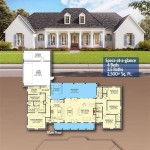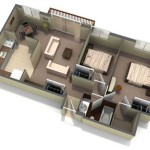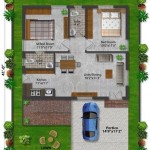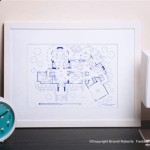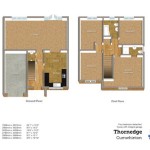Dollhouse Floor Plans: A Guide to Design and Construction
Dollhouse floor plans are essential for creating a realistic and functional miniature world. A well-designed plan provides a blueprint for construction and allows for careful consideration of space, scale, and aesthetic details. Whether building from scratch or modifying a pre-existing dollhouse, a floor plan serves as a valuable roadmap throughout the entire project.
Several factors influence the design of a dollhouse floor plan. The desired architectural style, historical period, and the intended inhabitants (doll family size and lifestyle) play crucial roles. The overall size of the dollhouse also dictates the available space and the level of detail that can be incorporated.
Scale is a critical aspect of dollhouse construction. Common scales include 1:12 (one inch equals one foot), 1:24 (half inch scale), and 1:48 (quarter inch scale). The chosen scale determines the size of furniture, accessories, and even the dimensions of doorways and windows. Maintaining consistent scale throughout the dollhouse ensures a harmonious and believable miniature environment.
The first step in creating a dollhouse floor plan involves determining the overall dimensions. Consider available space for displaying the finished dollhouse and the desired number of rooms. Sketching initial ideas on paper or utilizing graph paper can help visualize the layout and experiment with different room configurations.
Once the overall dimensions are established, the next step is to divide the space into individual rooms. Think about the purpose of each room and how it relates to the overall function of the house. A typical dollhouse might include a living room, kitchen, dining room, bedrooms, and bathrooms. Consider the flow of traffic between rooms and ensure adequate space for furniture and accessories.
Precise measurements are crucial for a successful dollhouse build. Indicate the length and width of each room on the floor plan, paying close attention to wall thicknesses. Accurate measurements prevent inconsistencies during construction and ensure that furniture and accessories fit properly within the designated spaces.
Incorporating architectural details enhances the realism and visual appeal of a dollhouse. Consider adding features such as fireplaces, staircases, bay windows, and built-in shelves. These elements add character and provide opportunities for intricate detailing. Mark the location and dimensions of these features on the floor plan.
Door and window placement requires careful consideration. Doors should be positioned for easy access and functionality. Windows should be strategically placed to maximize natural light and provide views both from within and outside the dollhouse. Indicate the size and swing direction of doors and the style and placement of windows on the floor plan.
Electrical planning is an important step, especially for dollhouses incorporating lighting features. Determine the location of light fixtures, switches, and outlets. Plan the wiring routes and ensure that they are concealed within the walls or under the floors. Mark the locations of electrical components on the floor plan.
Software programs designed specifically for dollhouse design offer advanced tools and features. These programs allow for precise measurements, 3D visualization, and the ability to experiment with different layouts and design elements. They can generate detailed floor plans, wall elevations, and even cut lists for construction.
Numerous online resources offer free printable dollhouse floor plans. These plans can serve as inspiration or be adapted to suit individual preferences. Websites dedicated to miniature enthusiasts often provide a wide variety of plans in different scales and architectural styles.
Modifying existing dollhouse floor plans allows for customization and personalization. Perhaps a room needs to be resized, a wall needs to be removed, or a new feature added. Careful planning and accurate measurements are crucial when modifying existing plans to ensure structural integrity and a cohesive design.
Constructing a dollhouse based on a well-designed floor plan ensures a successful and rewarding project. The plan provides a clear guide for each step of the building process, from assembling the basic structure to adding intricate details. A well-planned dollhouse offers endless possibilities for creative expression and miniature world-building.
Experimenting with different floor plan designs allows for the exploration of various architectural styles and interior layouts. Consider creating multiple floor plans for the same dollhouse shell to visualize different possibilities and choose the design that best suits individual preferences and the desired aesthetic.
Sharing dollhouse floor plans within the miniature community fosters collaboration and inspiration. Online forums and social media groups dedicated to dollhouse enthusiasts provide platforms for sharing designs, exchanging ideas, and seeking advice from experienced builders.
Dollhouse floor plans are dynamic documents that can evolve throughout the design and construction process. As ideas develop and new possibilities emerge, don't hesitate to revise and refine the plan to reflect the evolving vision of the miniature world being created.

The Dollhouse Floor Plan Making It Lovely

9 Free Dollhouse Plans Little Of Miniatures

Explore The Exquisite Floor Plan Of Queen Mary S Dollhouse

Wooden Doll House Plans How To Make A What Is Encyclopedia Best For Boys

Dollhouse Canadian Woodworking

How Cool Doll House Plans Floor

Creating Floor Plans For Dollhouse Camp Artbar

Handmade Dollhouse Plans Houseful Of

Colonial Doll S House Plans Dollhouse Woodworking

Plan Toys Victorian Doll House Basement Floor Advice From A Caterpillar

